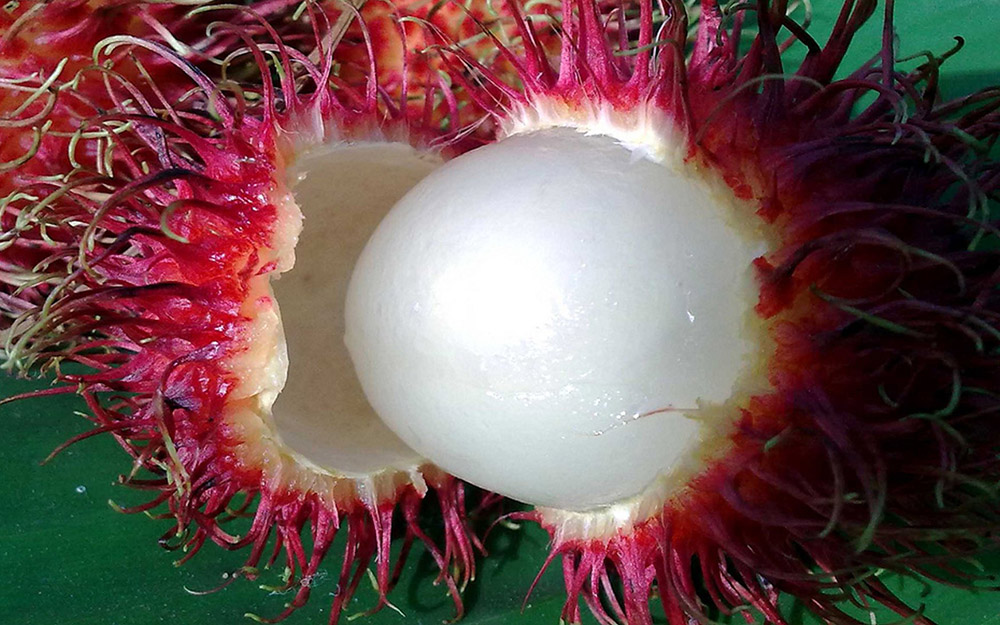Rambutan, a Sri Lanka superfood that looks good and tastes good!
With its 60 or so calories per fruit and small amounts of dietary fibre, protein and carbohydrate, eating rambutan can increase energy, boost immunity, strengthen bones and help fight cancer.
Along every roadside at this time of year you can see stalls piled high with spiky, red golf ball sized fruits. It is rambutan season.
Bearing another of Sri Lanka’s superfruits, the tall rambutan trees, Nephelium Lappaceum, are found all over the Gampaha and Colombo areas.
Brilliant red
All of a sudden, the big clusters of green balls turn a brilliant red, and branches start being broken to gather the ripe fruits.
The tree grows 15 to 25 meters tall and produces fruits twice every year, the main season being June to August, and sometimes a smaller second crop in December to January.
The white or green flowers have a sweet aroma. An average tree produces from 5,000 to 6,000 fruits each year some trees may even produce 10,000 fruits.
Rambutan is packed with vitamins C and B3, as well as phosphorous, iron, manganese, potassium, sodium, zinc, copper, magnesium and calcium.There are also a few unique organic compounds including vanillin and cinnamic acid, as well as antioxidants which promote overall health.
With its 60 or so calories per fruit and small amounts of dietary fibre, protein and carbohydrate, rambutan can increase energy, boost immunity, strengthen bones and help fight cancer.
Another bonus is they can help with weight loss due to their water and soluble fibre content. The leaves have also been used in skin and hair care. Traditional remedies use the seeds to cure common tropical ailments such as fever and dysentery.
Tough and hairy
The outer part of the fruit is tough and hairy, while the inside is tender and fleshy. It tastes sweet like a grape or lychee, which it resembles, and grows in bunches with stem sticking out. As well as red they can also have greenish yellow or orange skin.
To eat take the peel off, either cutting round the middle with a knife or using your thumb nails to split it open. Do not use your teeth as the skin contains an acid which can cause a reaction.
Always eaten raw, the fruits can be added to either savoury or fruit salads. And if you have the patience to peel and deseed enough you can make juice to drink or add to cocktails.

